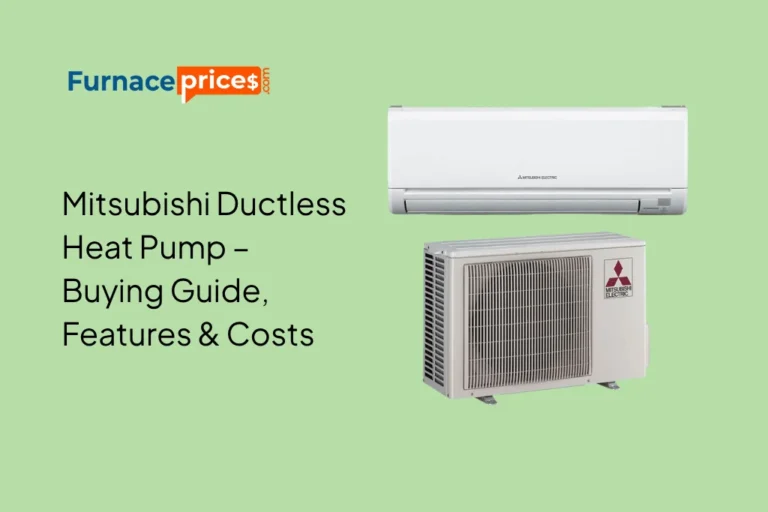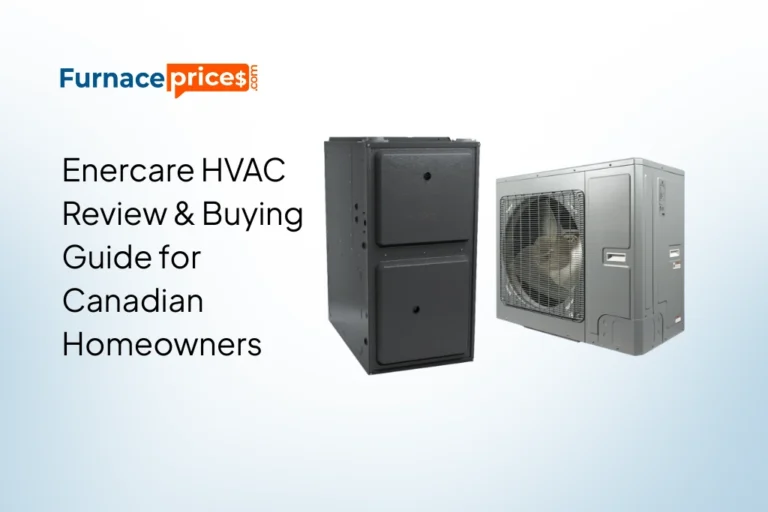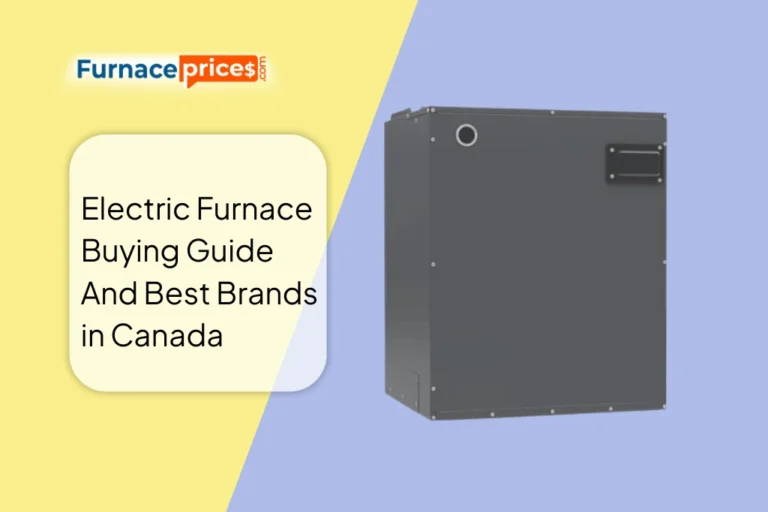-
Emergency/Next-Day Furnace Installation Available!
Carrier Ductless Heat Pump Guide: Costs, Features & Top-Rated Models in Canada

Introduction
In this Carrier Ductless Heat Pump mini‑split review, we compare their leading models, highlight key features, outline expected installation costs, and offer guidance for homeowners seeking a ductless heating and cooling solution.
If you’re considering a system that can provide both heating and cooling — without the hassle of installing ductwork — ductless mini‑splits (from Carrier and other brands) are worth examining for your home, cottage, addition, or small business space.
This review aims to help you compare brands and narrow down which Carrier models might suit your needs best.
Carrier Ductless Heat Pump: Strengths and Weaknesses
Strengths
- Offers both heat pump and air conditioning capability, depending on the model
- Some models earn ENERGY STAR® certification, helping reduce monthly energy use
- High SEER / HSPF ratings on premium lines can deliver efficiency gains
- Availability of low‑temperature or “cold climate” models suited for Canadian winters
- Features such as humidity sensors, occupancy sensing, and built‑in WiFi on select units
- Multiple mounting options—wall, cassette, ceiling, or concealed units—offered across model lines
- Both single‑zone and multi‑zone configurations available for flexibility
Weaknesses
- A more premium brand means higher cost versus many budget or mid‑market systems
- Some entry-level units may lack full ENERGY STAR status or top efficiency specs
- In extremely cold conditions, performance may decline unless you choose one of the stronger low‑ambient models
- Like with all HVAC gear, a subpar installation, improper sizing, or poor maintenance will reduce efficiency, comfort, and longevity
Typical Price Range (Canada / Ontario Context)
Below is a ballpark guide to what you might expect to spend on a Carrier Ductless Heat Pump system (equipment + installation). These estimates can shift considerably based on home layout, number of zones, insulation, complexity of mounting, local labour rates, and incentives or rebates.
| System Type | Estimated Total Cost* |
| Basic single‑zone Carrier ductless mini‑split | CA $7,500 – $12,500 |
| Higher‑end single or multi‑zone Carrier systems | CA $12,000 – $18,000+ (for larger homes, more heads, or tricky installs) |
* These figures include both the hardware and professional installation. If your home requires upgrades (electrical, wall penetrations, structural work) or if units must be mounted in difficult spots, costs often rise. Also, many provincial/utility rebate programs may help offset part of the expense.
For example, some Carrier residential heat pump installations in the U.S. (not ductless) range from $3,000 to $15,000+ depending on capacity and features.
Carrier Ductless Product Series And Top Models
Below is a breakdown of Carrier’s main ductless / mini‑split series, and examples of standout models to watch for in Canadian climates.
| Series / Model | Best Use Case | Key Features / Highlights |
| Infinity® | Top-tier, high-performance installations | Offers SEER2 up to 35.1, HSPF2 ~30, basepan heater, very quiet operation |
| Performance™ | Balanced efficiency and cost | Up to ~26 SEER2 and ~13.9 HSPF2 in some sizes |
| Comfort™ | More budget‑conscious installations | More modest efficiency, solid for moderate climates or supplementary systems |
Top Model Examples
- 37MPRA Infinity with Basepan Heater (single zone) – Premium model, built for cold climates and quiet operation
- 38MAR Performance Heat Pump – Good compromise model in the Performance line
- Comfort Series 24,000 BTU unit – Example of a more cost‑oriented model; includes standard warranty and moderate efficiency
These models reflect the range from high efficiency to more budget choices, giving homeowners flexibility depending on their climate, usage, and budget.
Key Features to Compare
When you’re comparing Carrier (or any brand) ductless systems, these features should guide your decision:
Cold‑Weather / Low Ambient Heating
You’ll want a model rated to maintain heating performance in cold outdoor temperatures. Some Carrier lines are designed with this in mind to better handle Canadian winters.
Efficiency: SEER, HSPF, ENERGY STAR
- SEER (cooling efficiency) and HSPF (heating efficiency) are key performance metrics.
- ENERGY STAR® certification tells you the unit meets or exceeds government energy efficiency benchmarks.
- Choosing higher-efficiency models can reduce your electricity bills and increase eligibility for rebates.
Smart Controls And Diagnostic Tools
Many modern units allow WiFi connectivity and app control, which helps you monitor system status, receive alerts, and adjust settings remotely.
Warranty Coverage
Look closely at warranty length and coverage—especially for major parts like compressors. Also confirm whether registering the unit is required (as it often is) and whether warranties differ by province.
Installation Quality
Even the best equipment fails to shine without proper installation. Sizing, refrigerant charges, airflow balancing, condenser and indoor placement — all of these affect performance and reliability.
Warranty And Maintenance Tips
Carrier offers respectable warranties on many of its ductless systems, often including 10-year parts coverage for major components when properly registered.
To protect your system and the warranty:
- Clean or replace filters regularly—especially during heavy cooling/heating months.
- Schedule an annual inspection with a licensed HVAC technician to check electricals, refrigerant levels, and general system health.
- Keep the outdoor unit free of snow, leaves, debris, and ensure proper clearance.
- Ensure indoor units are sealed, insulated, and installed flush and level.
- Clean indoor coils, vents, and fans periodically to reduce strain and extend lifespan.
These practices help maintain efficiency, reduce the chance of breakdowns, and support warranty validity over time.
How to Choose the Right Carrier Ductless System
Drawing from real-world HVAC experience (25+ years), here are some guidelines to help you pick the best setup for your home:
- Match to your climate
In parts of Ontario or colder regions, favour models with stronger low-temperature heating capabilities. - Calculate load properly
Instead of estimating by square footage alone, use a heat loss / heat gain calculation (or hire a professional) to size the system correctly. - Single vs Multi-zone
If you only need comfort control in one room or area, single-zone is more economical. For full-home coverage or differentiated control, multi-zone is suitable. - Lean on rebates and incentives
Many Canadian provinces and utility programs offer rebates for efficient heat pump installations. These can offset tens to thousands of dollars in cost. - Hire the right installer
Even the best system underperforms with a poor install. Choose a licensed technician, ideally one experienced with ductless systems. Ask for references, reviews, and proof of compliance with local codes. - Plan for future flexibility
If you anticipate expanding your system (e.g., adding zones), consider a model or line that supports expandability without needing full replacement.
Bottom Line
Carrier’s ductless lineup offers a solid mix of efficiency, options, and performance — especially when you pick a model suited for Canadian climates and have it properly installed. Their higher-end models give premium efficiency and features, while the more modest lines still offer decent value for moderate applications.
If you’re in Ontario or elsewhere in Canada and want to invest in a system that handles both heating and cooling, Carrier is worth considering — just be sure you get the right model, the correct size, and a top-quality installer.
Have questions about choosing a Carrier ductless heat pump—or comparing it to other brands? Our expert guides and local contractor directory are available to help. Visit FurnacePrices.com to learn more or request a free quote today.
For more information on energy efficiency standards and incentives in Canada, visit Natural Resources Canada.
📞 Have questions? Contact us or email us at contact@furnaceprices.com.
✅ Start comparing today and make the right choice with confidence!




![GREE Heat Pump Review in Canada [Comprehensive Brand Overview & Buying Guide]](https://furnaceprices.com/wp-content/uploads/2025/11/GREE-Heat-Pump-Review-in-Canada-Comprehensive-Brand-Overview-Buying-Guide-768x512.webp)


